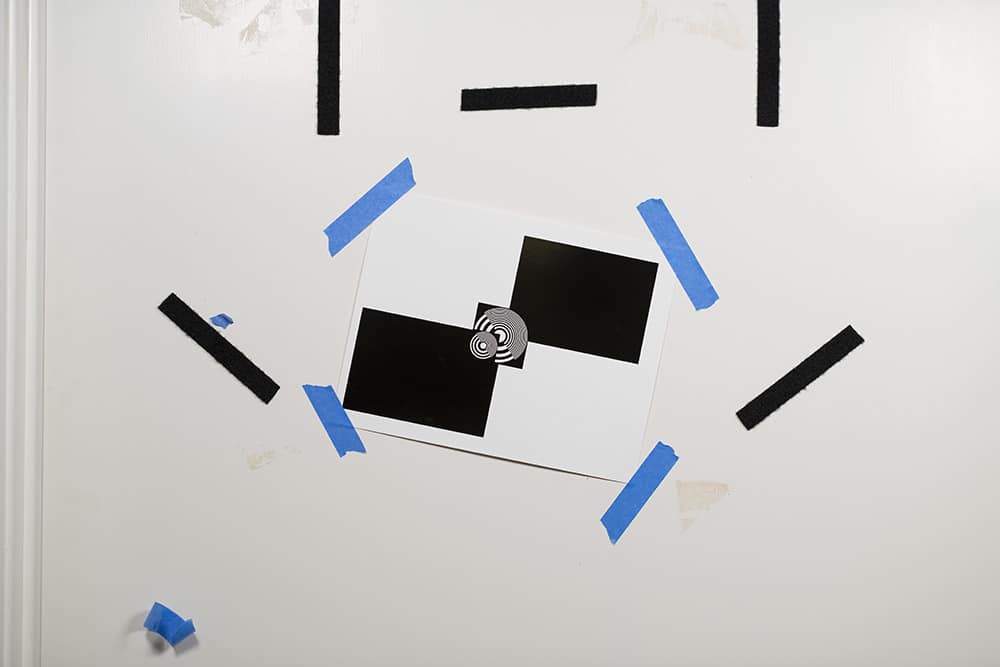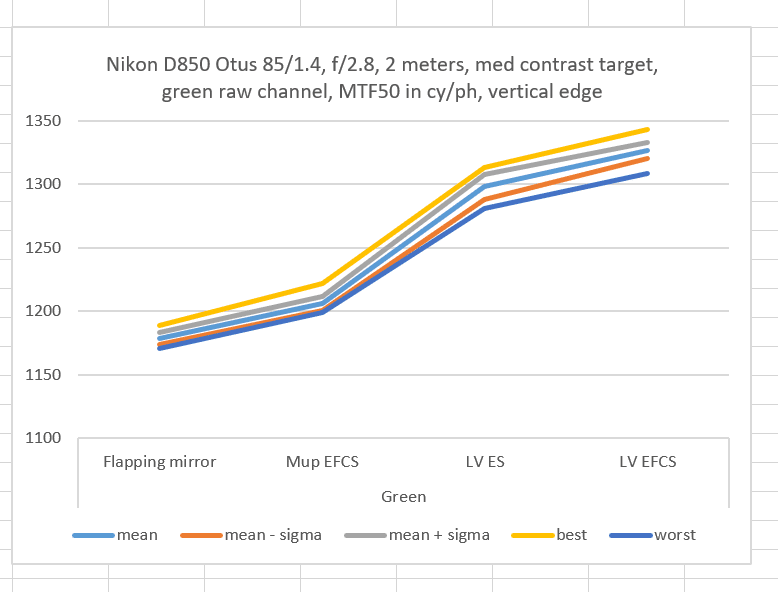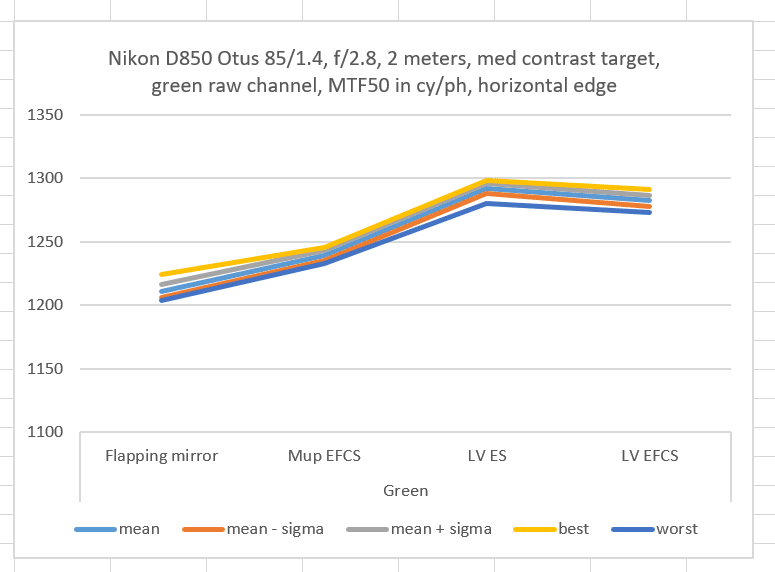This is the 21st post in a series of Nikon D850 tests. The series starts here.
The title of this post is less ambitious than the content. I will compare 4 different D850 shutter modes:
- Normal operation, with flapping mirror and mechanical shutter
- Mirror up operation with electronic first-curtain shutter (EFCS)
- Live view operation with EFCS
- Live view operation with electronic shutter
I used this target:
I focused manually using live view, max magnification, and focus peaking, and used a Nikon intervalometer set for a 3 -second delay to trip the camera for 32 exposures in each mode.
Here’s what I saw for a vertical edge in a raw green channel:
The vertical axis is the MTF50 measured in cycles per picture height, a standard measure of sharpness. Higher is better. I’ve plotted the worst, average (aka mean), and best results, and also the mean plus and minus the standard deviation (aka sigma). As expected, the normal mode of operation, with the mirror flipping up when the shutter release is depressed, is the worst. What is surprising is how little the double-press mirror-up, electronic first curtain shutter buys you. I’m suspicious; I’ll have to do another test with another lens and see if the same thing happens.
As expected, the two live view modes, with no mirror motion at all, did the best. There’s a little surprise here, though, as the electronic shutter (ES) did slightly worse than the EFCS; if anything, it should be better.
The shutter and the mirror on the D850 move up and down, so if the tripod is not converting vertical motion into horizontal swaying, we should see worse results for the flapping mirror with horizontal edges.
And we don’t. I’ve seen this before. Tripods are more stable up and down than side to side. You shouldn’t compare absolute values of the charts for the vertical and horizontal edges since they are different amounts off axis.
The EFCS is very slightly worse than the ES with horizontal edges. It is possible that there is an effect from the flicker of the Wescott LED light sources, that is modulating the vertical edges very slightly, and the slower travel time of the ES makes the effect more apparent. But that’s just a guess.



Jim,
either the first chart is labeled incorrectly, or your comment “as the electronic shutter (ES) did slightly better than the EFCS” is wrong.
I’m also quite surprised by the comparatively bad MUP+EFCS results. But I think all of these are probably good enough for real-work use. That’s definitely not the case if you use a lens with a tripod mount. I never got a really sharp macro image with the D600 and the 4/200 Micro. Switching to an A7 (more or less the same sensor) gave me visibly sharper images.
Chris
Thanks for the correction. I changed the word “better” to “worse”.
I’m going to try the collar-mount 200/2 next.
Jim,
Very helpful post. The results with MUP, EFCS are disappointing. Did you use shutter delay in your testing.
Bil
Yes, they are. I used the 3-second delay from the intervalometer, which gave a “double-push” three seconds apart, then a three-second wait, then repeated.